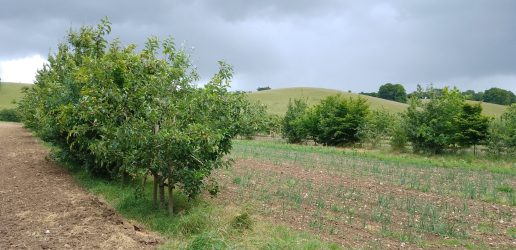We areForest Research
Forest Research is Great Britain’s principal organisation for forestry and tree-related research. We are internationally renowned for providing evidence and scientific services to support sustainable forestry.
Forest Research is Great Britain’s principal organisation for forestry and tree-related research. We are internationally renowned for providing evidence and scientific services to support sustainable forestry.
Ash dieback is a highly destructive disease of ash trees (Fraxinus species), especially the United Kingdom’s native ash species, common ash (Fraxinus excelsior).
The reference standard for sustainable forest management in the UK. The UKFS applies to all woodland in England, Scotland, Wales and Northern Ireland, irrespective of who owns or manages it.
The National Forest Inventory (NFI) programme monitors woodland and trees within Great Britain. It includes the most in depth survey carried out on Britain’s woodlands to date.
We produce statistics on a wide range of topics related to forestry.
Our trees are under threat from a range of pests and diseases. This page provides links to many of the tree pest and disease resources available from our website.
Ecological Site Classification (ESC) is a web-based decision support system to help forest managers and planners select tree species that are ecologically suited to particular sites.
The caterpillars (larvae) of oak processionary moth (OPM) are pests of oak trees (trees in the Quercus genus), and a hazard to human and animal health.
Phytophthora ramorum is a highly destructive, algae-like organism called a water mould. It causes extensive damage and death to more than 150 plant species, including some forest species.
Acute oak decline is an emerging disease of oak trees which was first observed in the UK late in the 20th century. It can kill oak trees within four to six years of the onset of symptoms.
You first need to calculate the total area of your forest and the area covered by each species. This may be available from inventory data or you might need to carry out a forest survey.
Deprived groups may experience differential access to greenspaces and associated services, which may be detrimental to their well-being.
Approximate lifecycle carbon emissions of a number of different fuels for heating, transport and power.
We publish a wide range of information in support of sustainable forest management in Britain. Publications are organised by category in the filtered search below. Our catalogue includes the FC publication library and archive as well as Forest Research articles and guidance.

You will find information about topics we are currently working on as well as archived material from completed projects. Current topics are what we see as being the key scientific challenges for our sector over the next few years, and details of the types of research we are undertaking in response.

The Technical Services Unit (TSU) provides technical and environmental services to a broad range of customers across the UK.
Forest Research uses micro-satellite analysis to produce DNA fingerprints from individual plants.
Technical Development develops, evaluates and promotes safe and efficient equipment and methods of work and provides output information, specialist services and advice on forest operations.
Our approach to management is to breed and release a host-specific predatory beetle, Rhizophagus grandis, that is found within the pest’s natural range.
Our scientists work on topics relating to planning, management and the protection of urban trees.
Spatial analysis techniques for habitat networks and working with / delivering tailored habitat network analyses.
Plant protection products – herbicides, insecticides and biocides – are only approved for sale and use in the UK once they have completed rigorous registration test.

Watch this space for future events. You can browse our previous events using the button below.

Detection dogs have been used in the UK for the first time to successfully identify tree disease, helping track down the deadly tree pathogen Phytophthora ramorum.

Forest Research, in partnership with the University of Reading, have created a tree species guide that identifies 33 species of trees and shrubs suitable for planting on agricultural land.

Help shape the future of the Climate Change Hub by sharing your feedback through a survey or focus group.

Detection dogs have been used in the UK for the first time to successfully identify tree disease, helping track down the deadly tree pathogen Phytophthora ramorum.

Forest Research, in partnership with the University of Reading, have created a tree species guide that identifies 33 species of trees and shrubs suitable for planting on agricultural land.

Help shape the future of the Climate Change Hub by sharing your feedback through a survey or focus group.